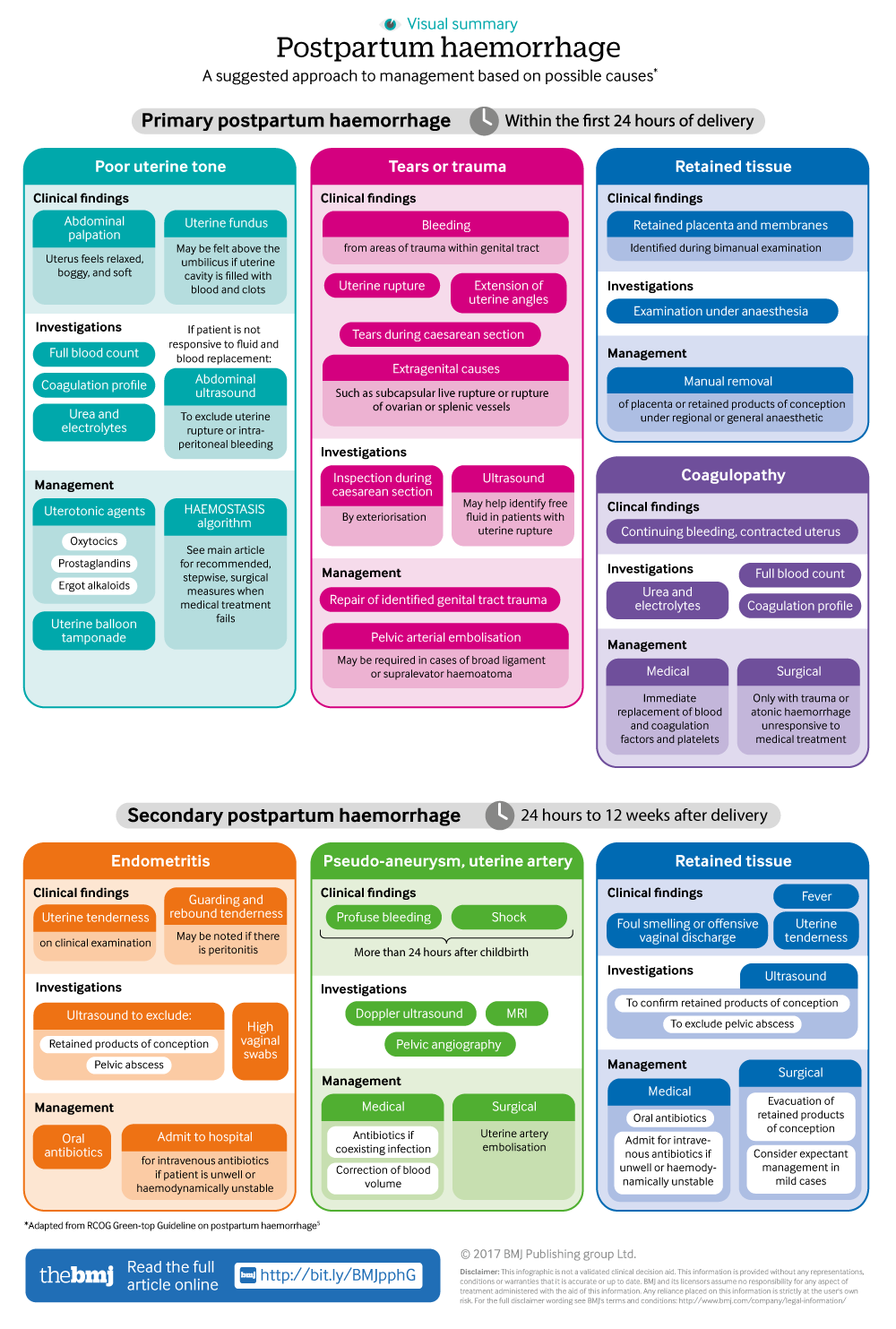Diagnosis and management of postpartum haemorrhage
BMJ 2017; 358 doi: https://doi.org/10.1136/bmj.j3875 (Published 27 September 2017) Cite this as: BMJ 2017;358:j3875
Infographic available
A visual summary of suggested approaches for the management of primary and secondary postpartum haemorrahage
- Edwin Chandraharan, consultant obstetrician and gynaecologist, lead clinician of labour ward, and honorary senior lecturer1 2,
- Archana Krishna, specialist registrar in obstetrics and gynaecology1
- 1St George’s University Hospitals NHS Foundation Trust, London SW17 0QT, UK
- 2St George’s University of London, London, UK
- Correspondence to: E Chandraharan edchandi{at}yahoo.co.uk
What you need to know
Postpartum haemorrhage remains the second leading direct cause of maternal deaths in the UK and the leading cause of maternal mortality in the world
Poor uterine tone accounts for about 80% of all cases of primary postpartum haemorrhage, whereas endometritis is the commonest cause of secondary postpartum haemorrhage presenting up to 12 weeks after delivery
Tranexamic acid is recommended for all women with atonic and traumatic postpartum haemorrhage as well as for ongoing haemorrhage during a caesarean section
Refer women with secondary postpartum haemorrhage after birth for ultrasonography to exclude retained products of conception or endometritis
Start broad spectrum antibiotics in women with secondary postpartum haemorrhage due to endometritis
Postpartum haemorrhage is a major cause of death during pregnancy and early motherhood, accounting for 25% of maternal deaths worldwide,1 and is the second leading direct cause of maternal deaths in the UK.2 It is defined as blood loss of more than 500 mL from the female genital tract after delivery of the fetus (or >1000 mL after a caesarean section). Primary postpartum haemorrhage occurs within the first 24 hours of delivery, whereas secondary postpartum haemorrhage occurs between 24 hours and 12 weeks after delivery and is less common.1 For every maternal death due to postpartum haemorrhage, there are at least 10 “near-misses.” Serious maternal morbidities include multiorgan failure, multiple blood transfusion, and peripartum hysterectomy.1 There have been recent advances in the management of postpartum haemorrhage secondary to coagulopathy and abnormal invasion of the placenta.3
This review highlights the causes, diagnosis, and management of postpartum haemorrhage and is aimed at those involved in obstetric and postnatal care.
Sources and selection criteria
We searched PubMed using the key words “postpartum haemorrhage,” “balloon tamponade,” “uterine compression suture,” “embolization,” and “obstetric haemorrhage” from 1981 to 2016. We also considered review articles from 2001 to 2016 …
Log in
Log in using your username and password
Log in through your institution
Subscribe from £173 *
Subscribe and get access to all BMJ articles, and much more.
* For online subscription
Access this article for 1 day for:
£38 / $45 / €42 (excludes VAT)
You can download a PDF version for your personal record.
